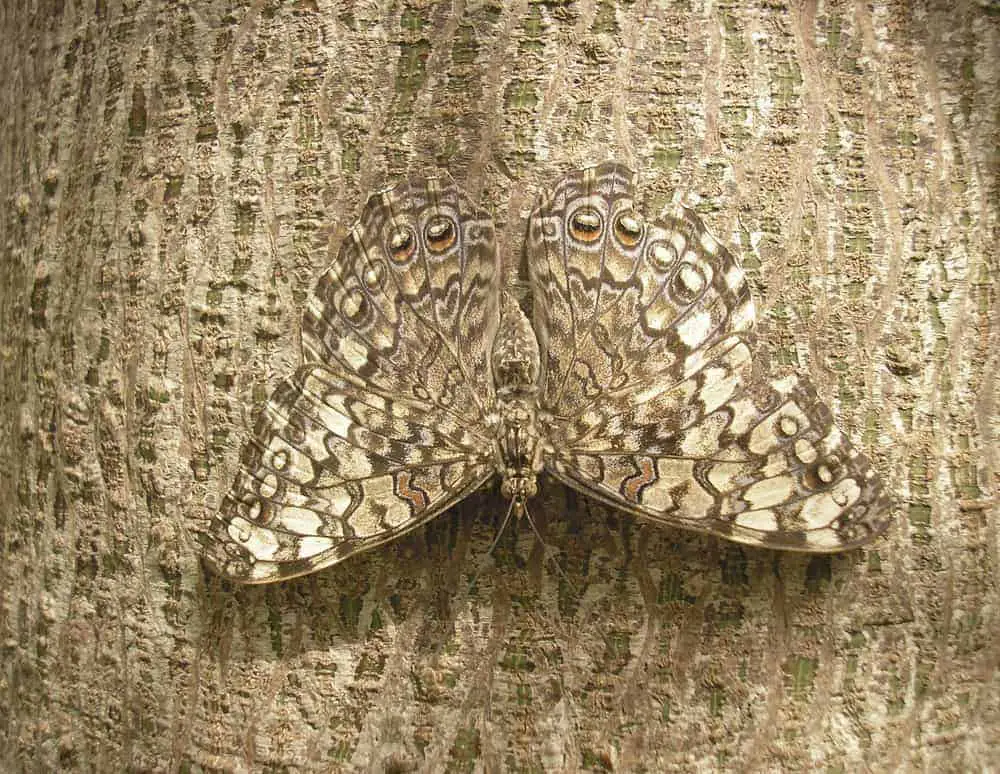
My family and I were walking through our garden the other day, we caught sight of a leaf running away from us and up the trunk of a tree. The funny thing is, there was no wind blowing at the time. As we got closer to it, just hanging out on the tree branch, we realized it was an insect, a type of Mantis that has a camouflaged body that makes it look just like a brown leaf.
While investigating further, we found out that the insect was called a Ghost Mantis. It made me wonder about other animals that could camouflage themselves.
Research shows that different animals use mimicry and camouflage depending on three factors: behavior, hunting grounds, and blending in, e.g., a wrap-around spider uses its anatomy and behavior, predators use the environment they hunt in a while blending in with the habitat common for a chameleon.
In my research, it was surprising to learn that animals use camouflage regardless of their environment. Terrestrial animals, aerial animals, aquatic animals, and arboreal animals all have some species that use mimicry or camouflage as it’s commonly known to survive.
If you love animals just as much as I do, you will find the information I have gathered just as compelling as I did. However, it is kind of scary to know some animals can be living in plain sight, maybe even in your back yard, and you would be none the wiser.
Table of Contents
- Mimicry vs. Camouflage
- Terrestrial Animals
- Aerial Animals
- Aquatic Animals
- Arboreal Animals
- In Conclusion
Mimicry vs. Camouflage
Well, you might be forgiven for believing that mimicry and camouflage are the exact same thing. The truth is both are almost the same with one exception:
Mimicry
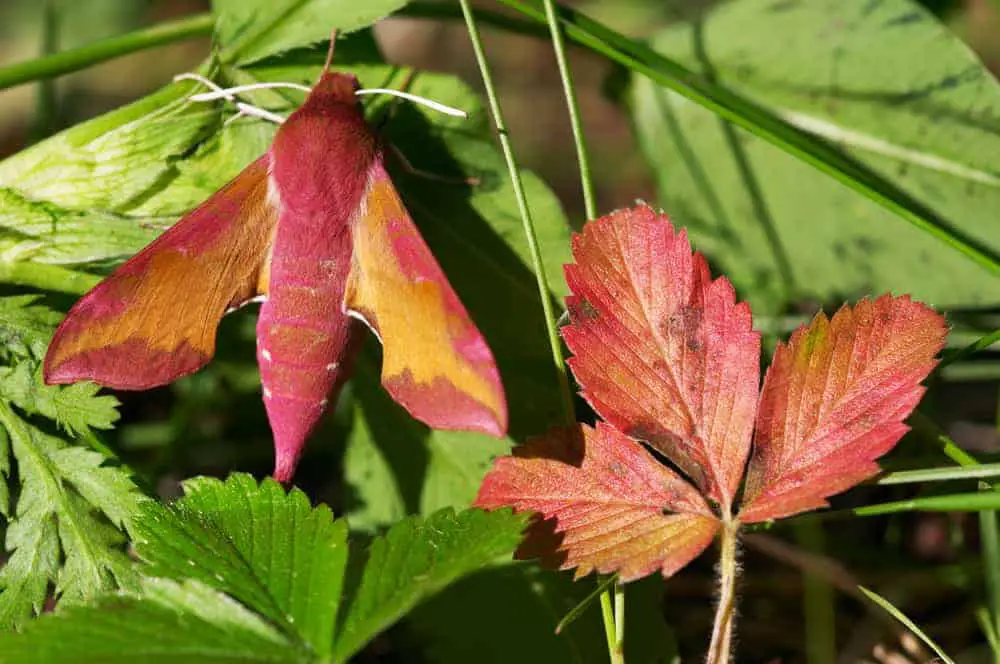
Animals that use mimicry change their appearance, behavior, smell, and location to mimic another animal. It helps the animal from becoming a predator’s prey.
They mimic another distasteful or harmful animal to predators and thus dupe the predator into thinking that they are dangerous or unpleasant; this feature helps protect them. For example; Kingsnakes are harmless snakes and would usually be vulnerable to attack from predators.
This snake uses its colors and patterns to mimic the much more dangerous Coral snake. Predators know this is a venomous snake and so they avoid both species.
Camouflage
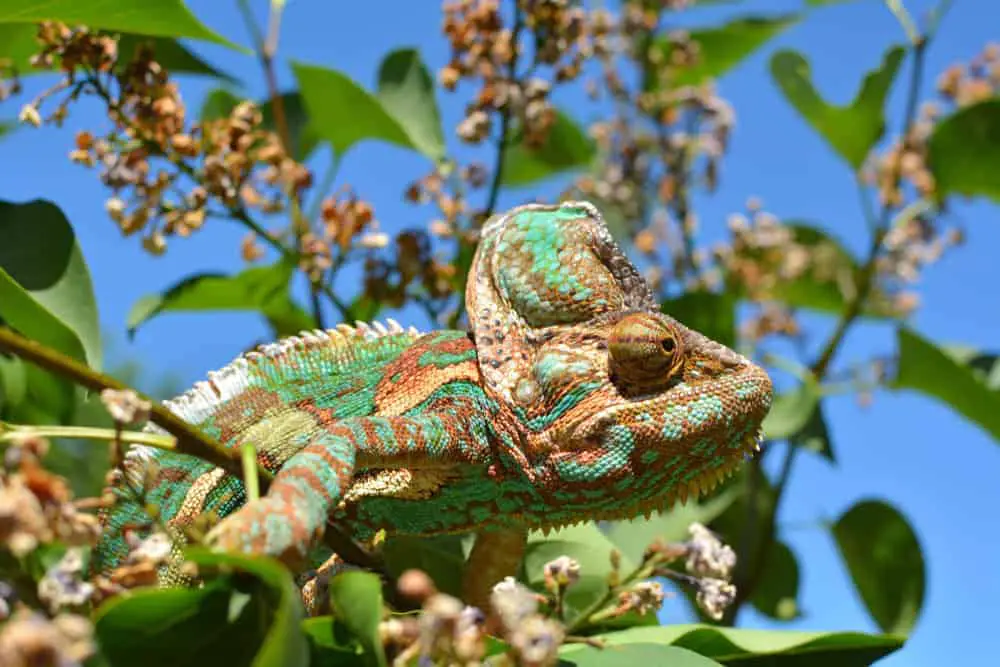
Animals that use camouflage use the environment or blend in with the surroundings to appear less visible. For example, animals like chameleons use their ability to change their body’s colors and patterns to camouflage its body and appear less visible. Other animals like the Polar Bear use their white furry coat to blend into the surroundings and is then able to get much closer to their prey before being noticed.
Terrestrial Animals
Even though terrestrial might sound like an alien invasion, it is a term that comes from the Latin word terra, meaning land. The animals under this category are mostly land animals, although some flightless birds also made the cut.
The terrestrial animals that stood out most for camouflage in behavior and anatomy, use of the environment, and blending in are as follows.
Disruptive Coloration (Behavior and Anatomy): The Zebra
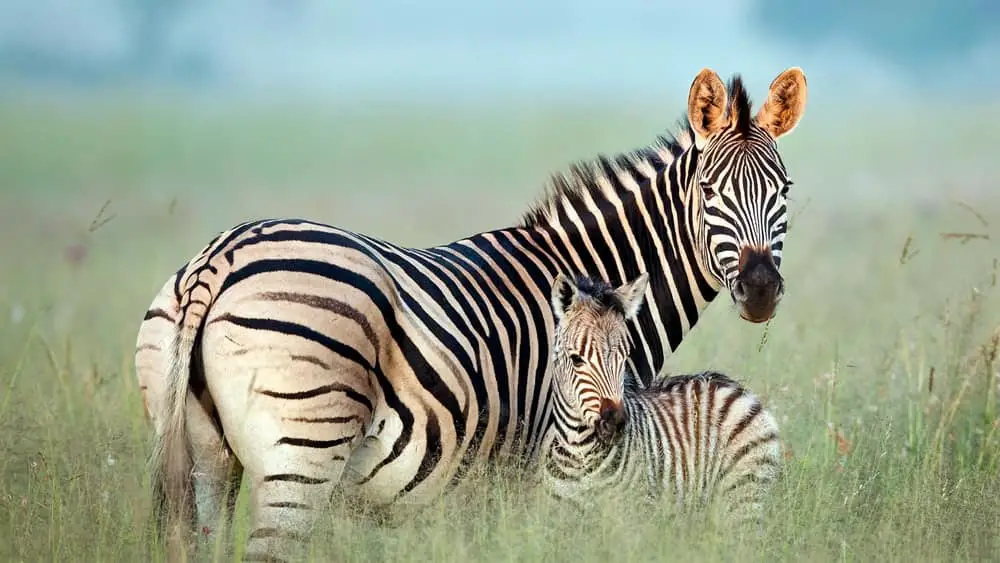
The Zebra might not be the first animal that comes to mind when thinking of camouflage. Still, the Zebra is one of the best examples of a land animal that uses its anatomy and behavior to hide from predators. The Zebra is mostly found in the Northern and Southern parts of Africa, and they usually travel in large groups.
The stripes that look similar to the style of wavy lines (disruptive coloration) on military uniforms help them to hide in the tall grasslands. They also tend to stand very still when they spot a predator, thus giving the illusion that they are part of the tall grass.
They might stick out a lot because their stripes are black and white, but this does not matter as their main predator, the Lion is colorblind, and their stripes blend in perfectly with their surroundings.
Active Camouflage (Environment): The Arctic Fox
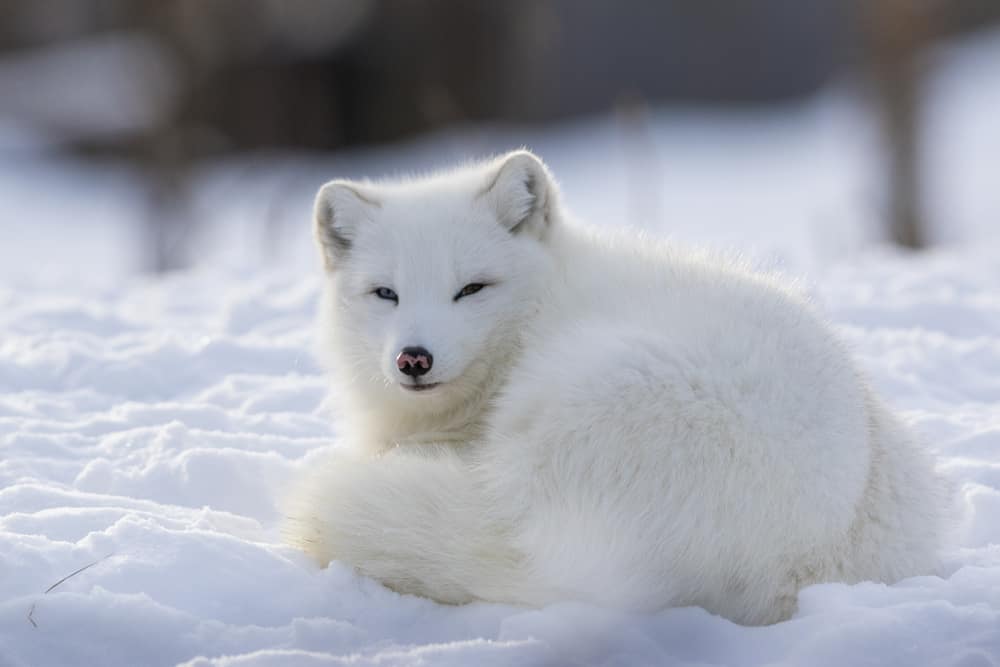
The Arctic Fox is a prime example of terrestrial animals that use their environment to help camouflage them from predators and prey. In the harsh winters of the North Pole, it can be hard for any animal to survive; this is why the Arctic Fox is so remarkable.
These small animals only grow to about a large house cat and can be a favorite meal for predators like the Polar Bear. They have a thick white dense coat of fur that protects them from these extremely cold climates and use it as camouflage to hide from predators or prey.
This white coat is the color of snow, and they can barely be seen when they are sleeping or standing still against the white snow. This thick white coat turns a light to medium brown in the summertime, making them fit in with the rocks and mountain landscape when the snow has melted.
These animals are brave, and in wintertime, when food is scarce, they have been known to walk behind their main predator, the Polar bear’s footsteps, and eat their left-over food.
Color Matching (Blending In): The Lion
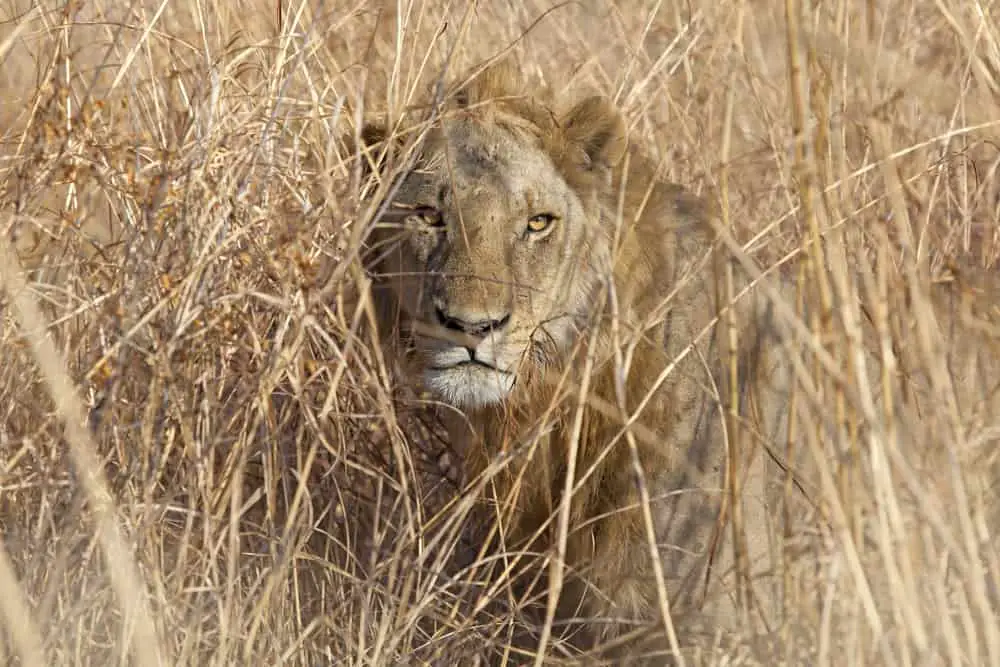
While the Lion might be king of the jungle, they still need some help from mother nature to catch prey. These strong, majestic predators are a good example of blending in with your environment. Lions are usually the same golden color of the grass they like to hunt in.
They use this feature to hide in the tall grass and catch their prey unawares. Most male Lions have a thick band of fur around the neck called a mane; female lions don’t have this feature. It is because, in most cases, females are the hunters.
Only young males who have not mated yet have to hunt to stay alive, and their manes grow darker and thicker the older they get. So this helps them still blend into their hunting grounds while they are not part of pride yet.
Aerial Animals
We might think of aerial animals like birds, bats, or insects like moths and mosquitoes, and this is not true. Aerial animals include animals that can fly, soar, and glide naturally in the air. Some examples of animals you would not think of as aerial include flying squirrels and sugar gliders.
Disruptive Coloration (Behavior and Anatomy): The Horned Owl
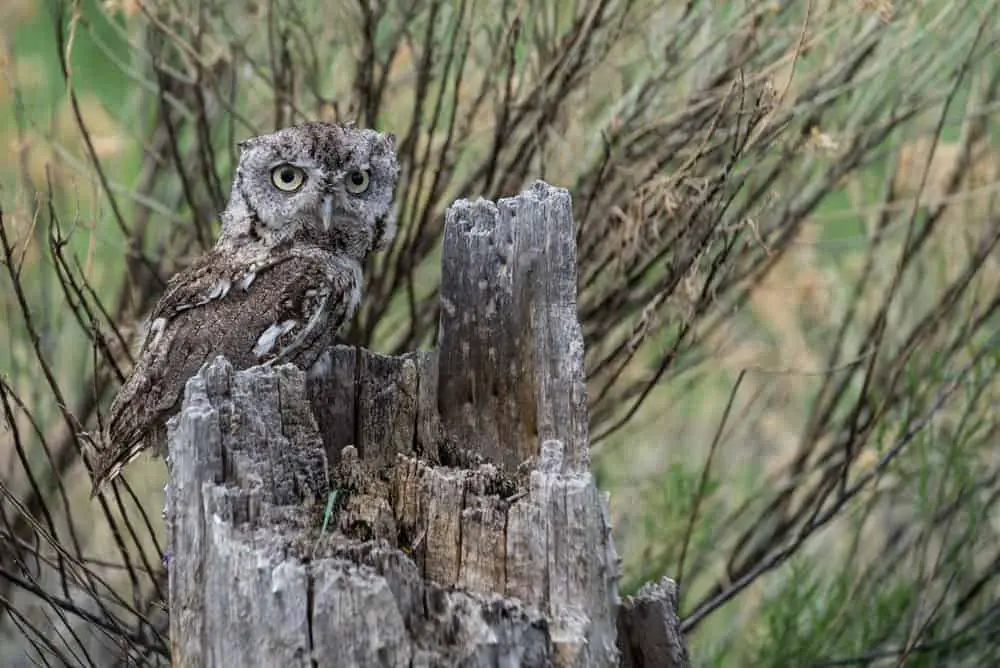
This beautiful owl is native to the Americas, and they have big ear tuffs known as horns. Also known as the tiger owl, this winged bird uses the different patterns on its feathers that look exactly like the bark of a tree to camouflage it when it is either hiding from predators or trying to catch a juicy little rodent for dinner.
They have fantastic eyesight and can use their camouflage to fly high above the branches of a tree and remain undetected. They hunt at night, and thus, the camouflage also helps them hide from predators during the day when they are sleeping.
Active Camouflage (Environment): Scarlet Tanager
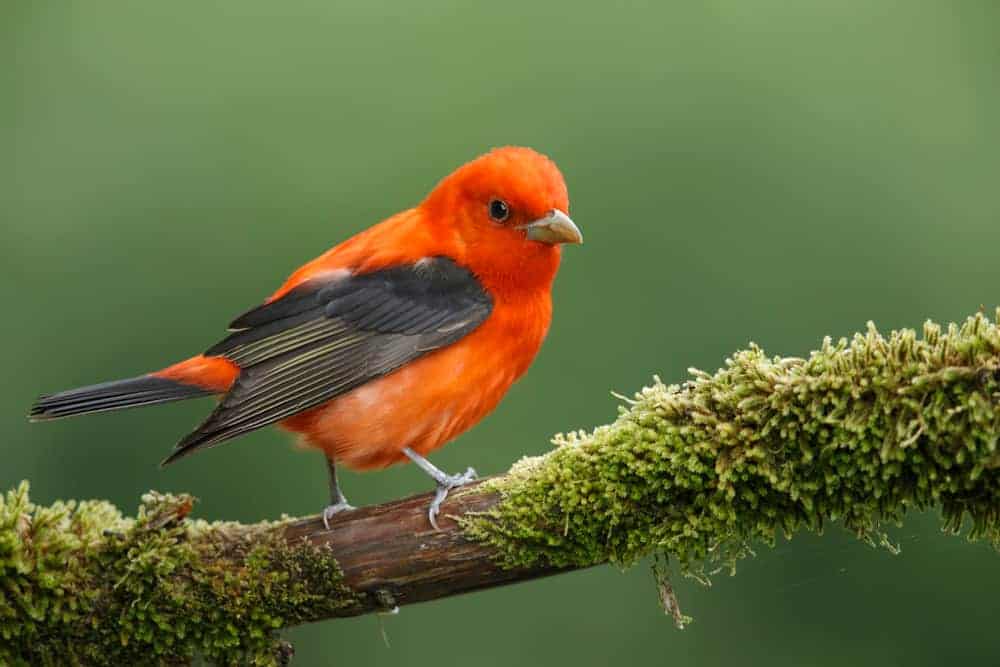
This brightly colored bird will only be brightly colored during the summer months. When it’s summertime, this bird has shed its winter feathers in a process called molting. It uses bright red colors as camouflage to hide in the trees and flowers. The Scarlet Tanager is primarily found in eastern North America.
It helps them hide from would-be predators and acts as camouflage when hunting for insects as their red and black feathers match many flowers in spring and summertime. When colder weather arrives, they molt again, and their red and black feathers are replaced with greenish-brown feathers to match the trees, plants, and leaves of fall and winter.
Color Matching (Blending In): Butterflies
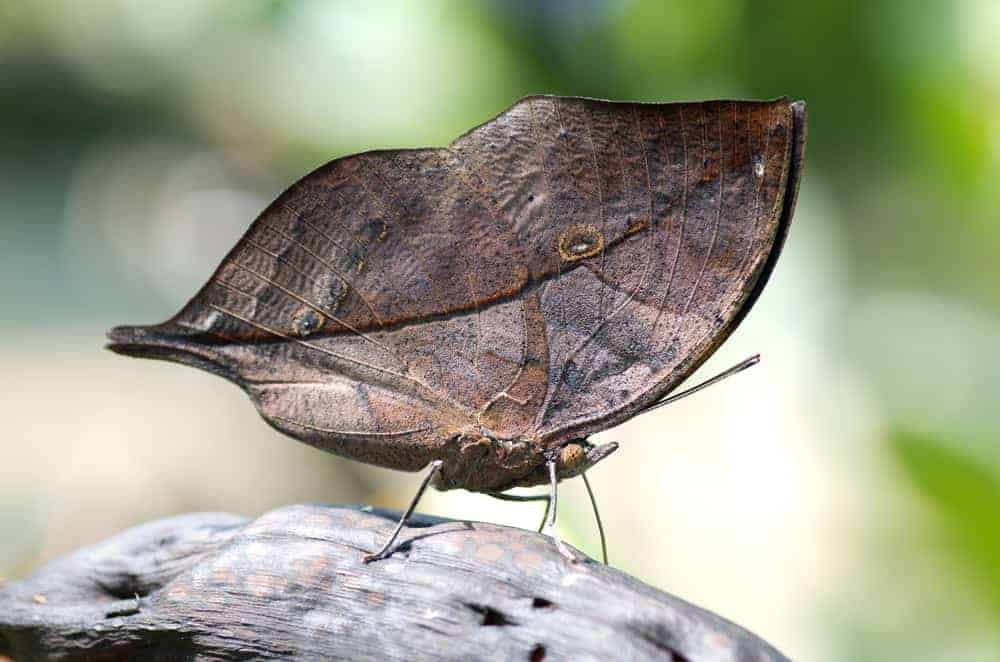
These very colorful insects come in all the colors of the rainbow. Interestingly enough, some butterflies have adapted their coloring to match the flowers they prefer to dine on. It makes it virtually impossible for predators to see them.
Some have huge wings and use distinct patterns to make them look like predators, such as owls and big birds of prey. Butterflies are found everywhere globally, and each species has adopted a sort of camouflage to keep them safe.
Aquatic Animals
It was rather interesting to learn that so many sea creatures also make use of camouflage to survive. These creatures are known to come in all shapes, sizes, and colors. Some have horns on their entire body, and others are so small they can fit on the tip of your finger. Chamouglased animals are found in most parts of the ocean. Some live in coral reefs, others in deeper places where they need to conceal themselves, or they might become a predator’s next meal.
Disruptive Coloration (Behavior and Anatomy): The Cookie Cutter Shark
The Cookie Cutter Shark is a prime example of an animal using its body to trick other animals. Also called the cigar shark, this tricky shark uses Bioluminescence, just like fireflies, to create what appears to be a small fish on its belly.
When other predators swim towards the small fish figure is created, The Cookie Cutter Shark uses its round mouth full of sharp teeth and bites huge chunks of meat from these other bigger marine animals.
Active Camouflage (Environment): Squid and Octopi
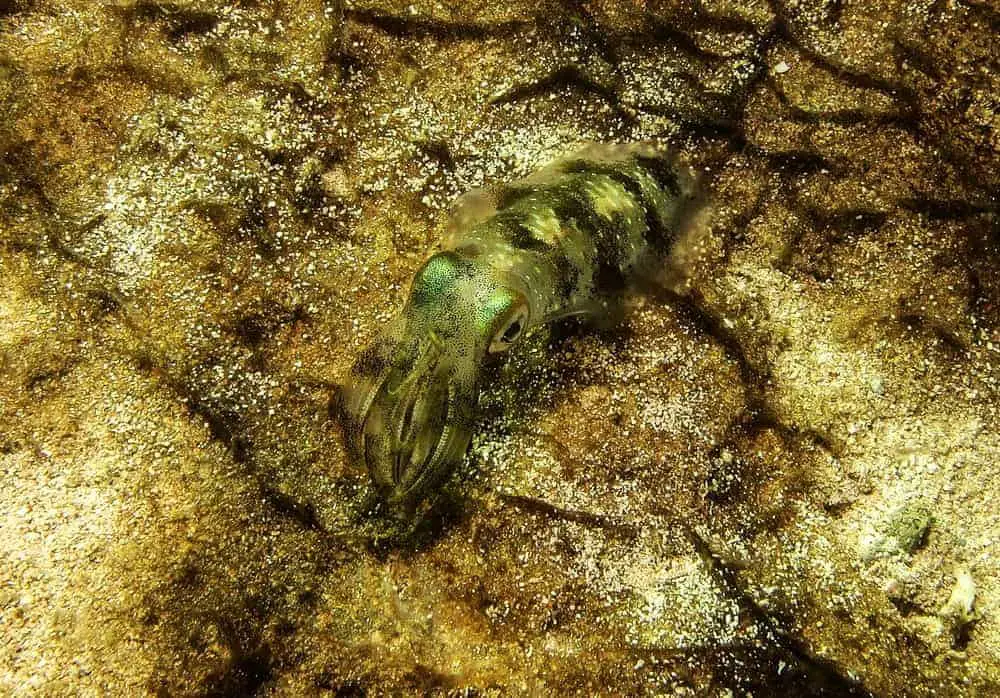
These underwater animals are seriously the masters of disguise when it comes to camouflage. They can change their body’s color to match their surroundings.
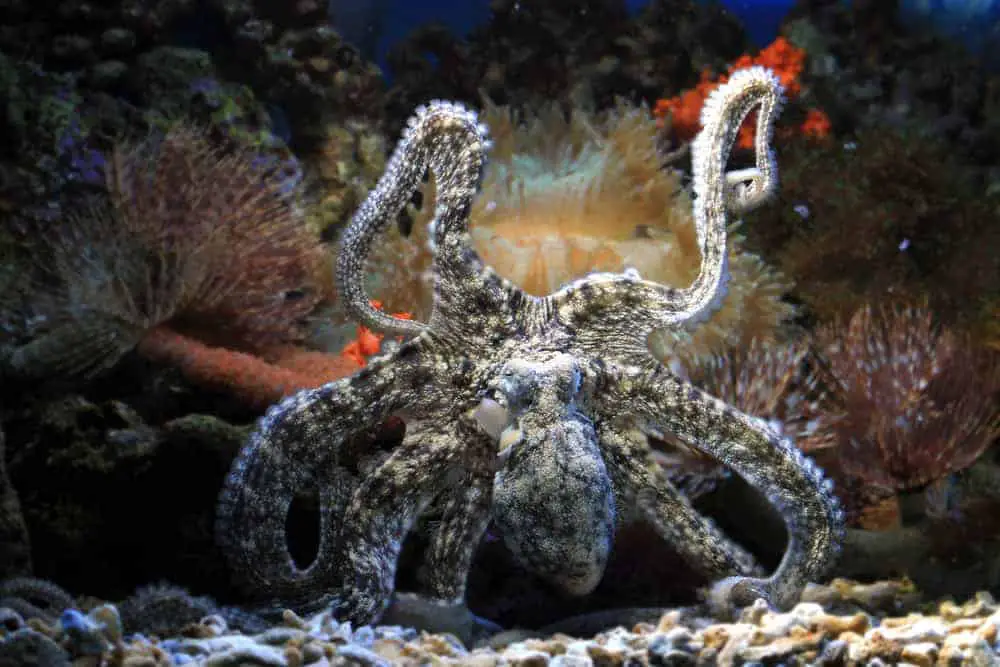
They can change their color and patterns to remain undetected by some predators and small sea creatures they want to make their next meal. They lure the fish in by looking just like the coral reefs the fish use to find food.
They attack by grabbing hold of their prey with their many tentacles and using their terrifying-looking mouth situated at the bottom of their bodies to finish their meal off.
Color Matching (Blending In): The Stonefish
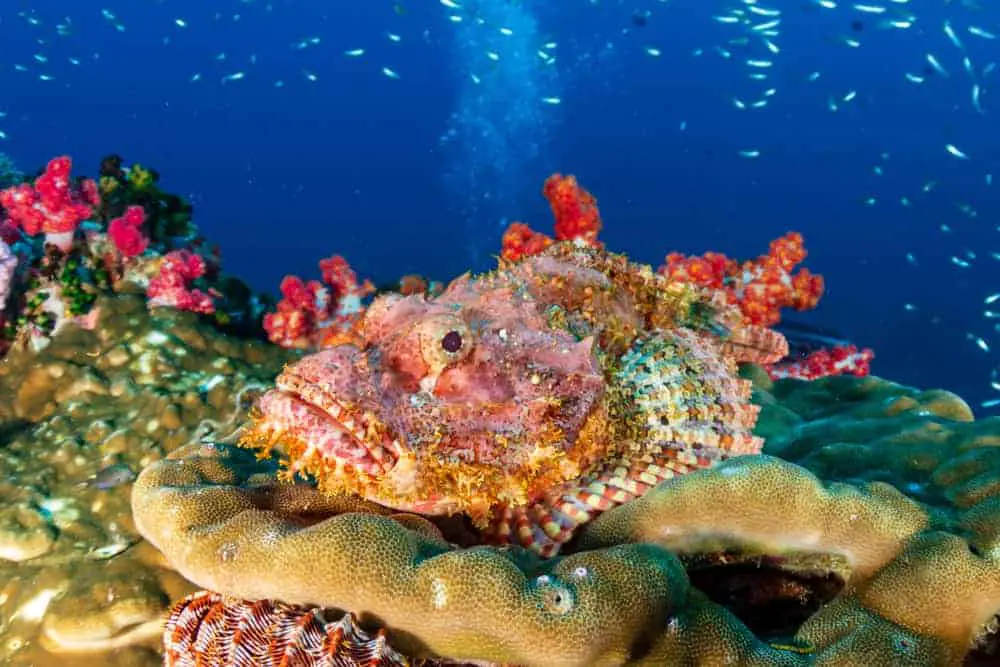
The stonefish has amazing color blending skills that make it one of the best camouflaged creatures in the ocean. They most often sit at the bottom of a coral reef.
As the name suggests, they look almost exactly like the stony parts of a coral reef. They are so good at staying still for long periods at a time that divers could be swimming right past them and have no idea they are even there.
While this ability is great for catching prey and hiding from bigger predators, stonefish are extremely poisonous. Their venom can kill some big predators and kill a human in under an hour.
Arboreal Animals
Arboreal animals are not what I expected when I started this camouflage journey. These animals live in trees and have adapted their bodies and lifestyle to help them navigate dense forests and trees. Some of these animals include monkeys and spiders.
Disruptive Coloration (Behavior and Anatomy): Leaf-Tailed Gecko
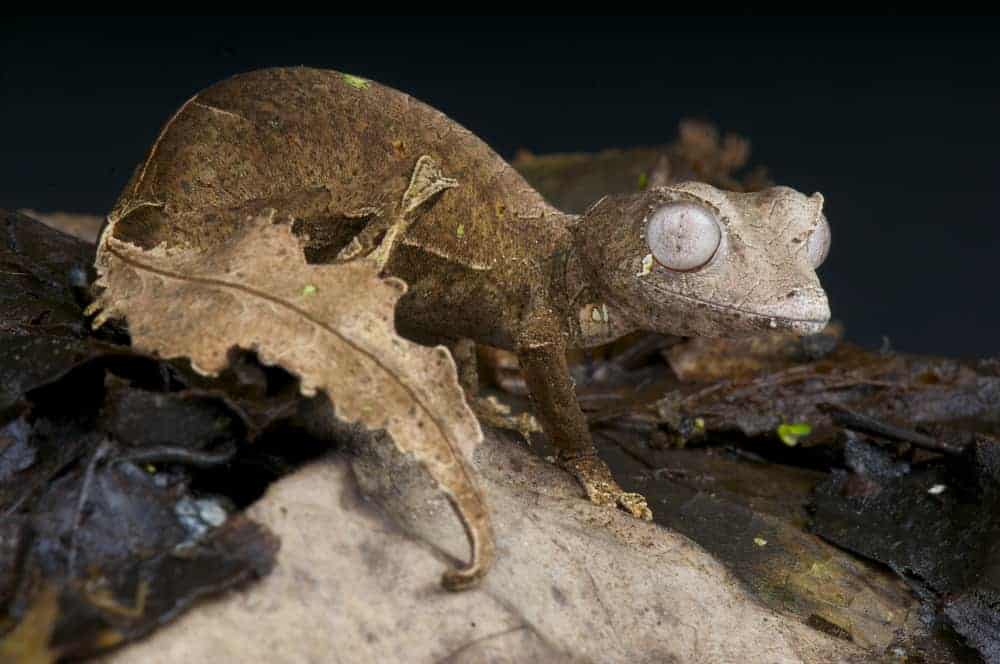
The Leaf-tailed gecko is native to Madagascar and is one crafty little lizard. They have the coloring of leaves on a tree and a tail that also looks like a leaf. They have mastered the art of disguise and are very hard to spot hiding between the leaves.
They could be a nice snack for some wildlife predators in this region, and when they feel threatened, they can push their little bodies flat to the trunk of a tree amongst the leaves, thus avoiding detection.
Active Camouflage (Environment): The Chameleon

We are all familiar with this little guy. Chameleons come in a lot of different shapes, sizes, and colors. They can change their color to the colors and patterns of their surroundings. These creatures can climb and leap to safety when threatened or change color and become very still.
Even their eyes have adapted this ability. Most chameleons have 360-degree vision, plus they can look in 2 different directions at the same time. This unique feature allows them to see predators or prey coming from all directions at once and at quite a distance.
Color Matching (Blending In): The Sloth
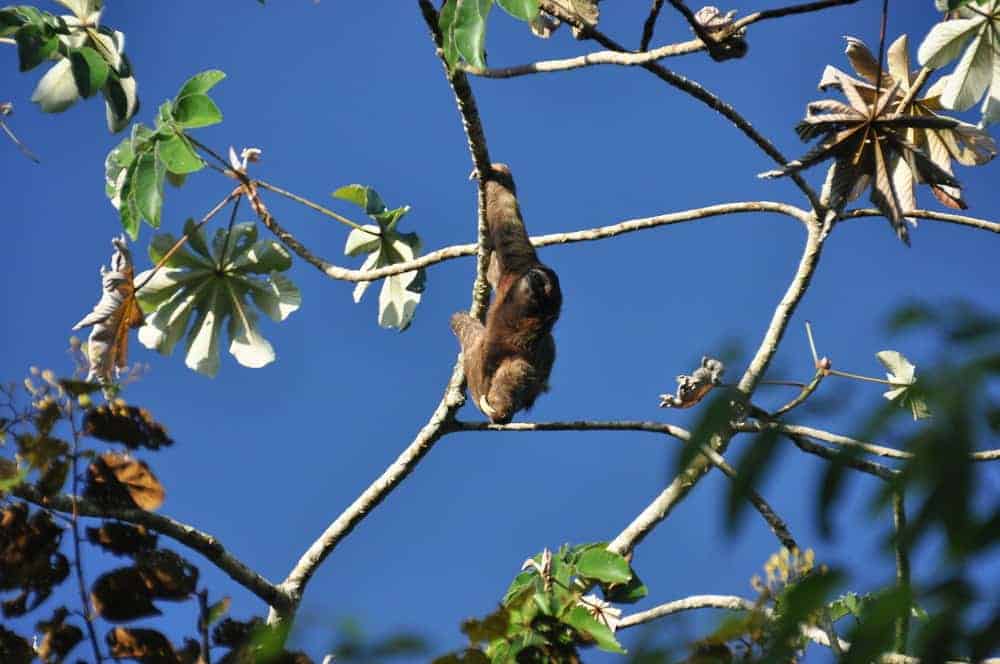
These cute but oh so slow animals are native to the tropical forests of South America. They can sleep more than 20 hours a day, making them vulnerable to attack; they have adapted to look like the trees they spend 99% of their time living in.
Because they move so slow, they need to stay hidden as much as possible. Its fur matches the color of the tree’s bark and has a rough texture, helping it look more like tree bark. The lack of speed helps them in this regard as they move so slow that moss grows on their fur, thus making them look a lot like the trees they live in.
They have limbs with huge claws attached to them, making them the perfect tools to stay gripped to the tree even when sleeping.
In Conclusion
Most animals use some form of camouflage and it is fascinating to learn how they tend to hide to survive. Maybe the next time you are walking in the park or just in your backyard, you might catch sight of a little critter just trying to survive.
References:
AnimalHow: 36 Animals With Amazing Camouflage Skills (With Pictures)
Feri.org: 10 Most Amazing Camouflaged Animals In The World
Ask A Biologist: Camouflage in Nature
Bored Panda: 20 Amazing Examples of Animal Camouflage
The Spruce: Bird Camouflage – Color and Defense
HowStuffWorks: How do a zebra’s stripes act as camouflage?
Arctic Kingdom: TOP 10 FUN FACTS ABOUT ARCTIC FOX
Project Learning Tree: 32 EXAMPLES OF CAMOUFLAGE IN NATURE
American Forests: 9 Animals That Use Forests as Camouflage
UCSB Science Line: What is the difference between mimicry and camouflage?



